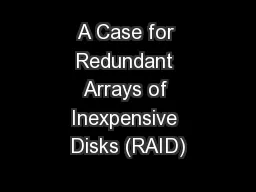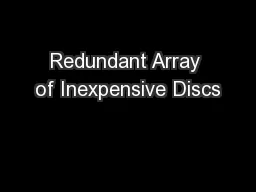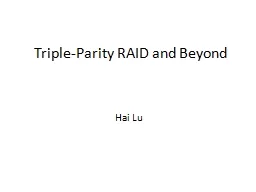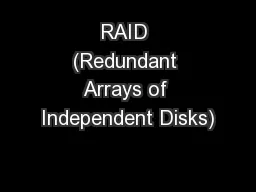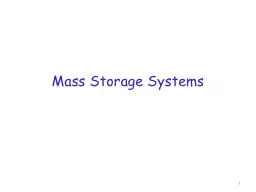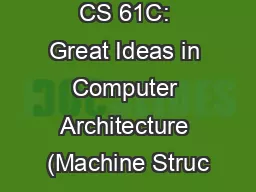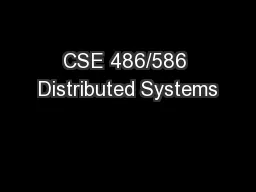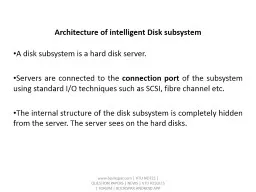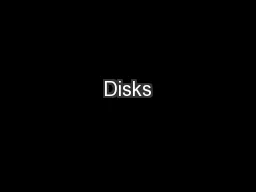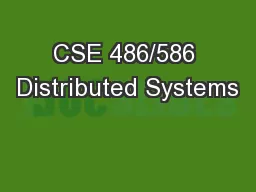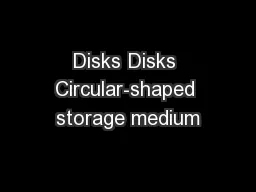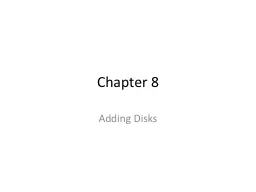PPT-A Case for Redundant Arrays of Inexpensive Disks (RAID)
Author : briana-ranney | Published Date : 2017-10-27
David A Patterson Garth Gibson and Randy H Katz Presented by Connor Bolton Background 1974 to 1984 Single chip speed increased 40 a year Magnetic disk doubled
Presentation Embed Code
Download Presentation
Download Presentation The PPT/PDF document "A Case for Redundant Arrays of Inexpensi..." is the property of its rightful owner. Permission is granted to download and print the materials on this website for personal, non-commercial use only, and to display it on your personal computer provided you do not modify the materials and that you retain all copyright notices contained in the materials. By downloading content from our website, you accept the terms of this agreement.
A Case for Redundant Arrays of Inexpensive Disks (RAID): Transcript
Download Rules Of Document
"A Case for Redundant Arrays of Inexpensive Disks (RAID)"The content belongs to its owner. You may download and print it for personal use, without modification, and keep all copyright notices. By downloading, you agree to these terms.
Related Documents

